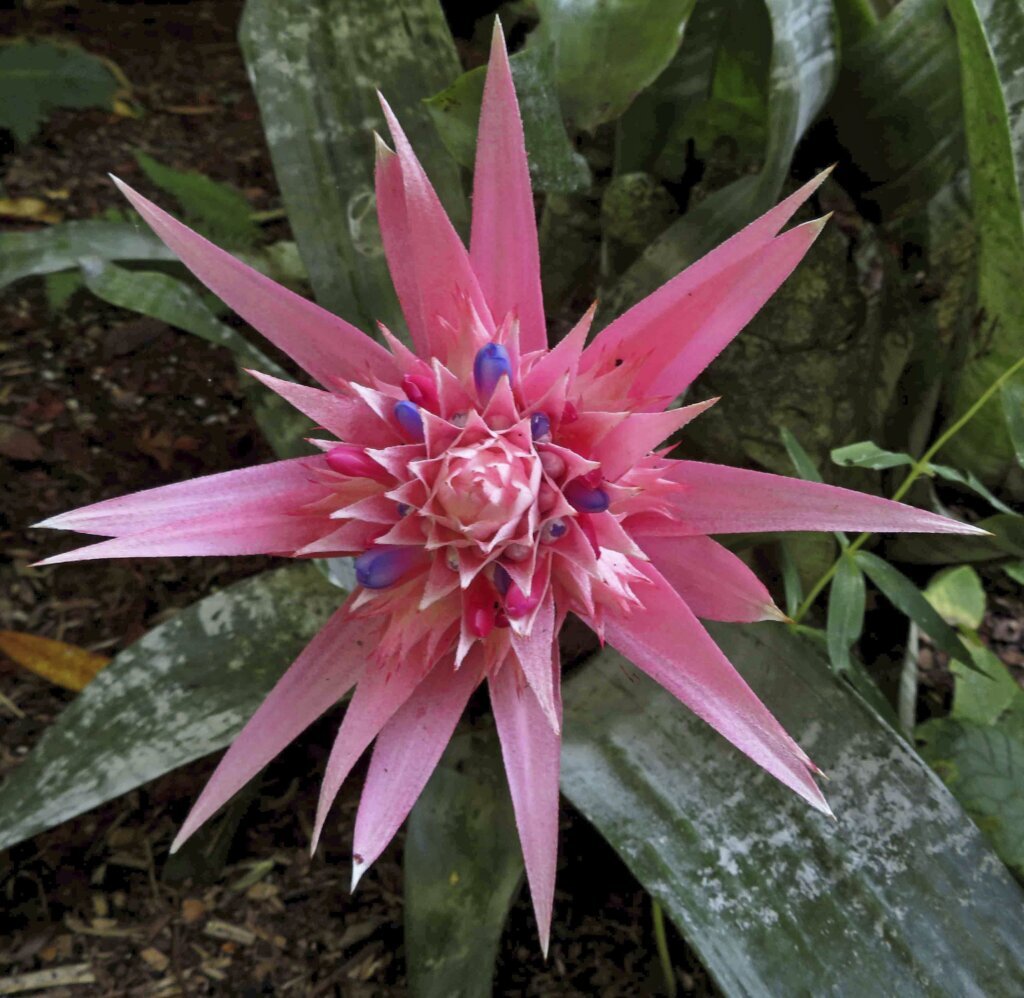These plants wait their whole lives to bloom once. It’s usually spectacular

Flowering annuals generally bloom nonstop before dying at the end of the year or season. Perennials return every year, providing either season-long color, a burst of blossoms followed by sporadic blooming or a limited show that can last as little as two weeks. And biennials flower only in their second year before calling it quits.
But there’s another group of plants called monocarpics that spend their whole lives growing in size only to provide a single, swan-song bloom before leaving us for the great compost pile in the sky.
Some monocarpic plants, whose name is derived from the Greek for single (“mono”) and fruit (“carpos”), have a cult following among a subset of gardeners who revel in what can be years of anticipation, often throwing parties to display their plant’s once-in-a-lifetime death bloom.
Others growers, however, can be caught off guard to discover their 30-year-old landscape plant unexpectedly blooming, only to watch it die immediately afterward.
Flowers, of course, have a purpose: to ensure the posterity of their species. After their bloom concludes, plants produce seeds to ensure future generations, which completes their mission. Monocarpic plants have just one shot at this, so, as you might imagine, the effort is often spectacular.
Examples of these one-hit wonders
Take the century plant (Agave americana), whose name is the poster child for hyperbole. Rather than living for 100 years, as its name suggests, the desert plant native to Mexico and Texas and hardy in zones 8-11 has an average lifespan of just 10 to 30 years. During this time, it grows to about 6 feet tall before sending up a giant flower stalk that can reach 30 feet, frequently shocking its owners. News coverage often ensues.
A 19-year-old American columbo (Frasera caroliniensis) growing at the North Carolina Botanical Garden in Chapel Hill bloomed to local fanfare this spring. The unique plants native to the eastern and central United States grow in foot-tall clumps for many years before pushing forth a 6-to-8-foot spike of green, purple-speckled flowers.
Typically sturdy, resilient and drought-tolerant, the monocarpic plant category also includes fishtail palm (Caryota spp.), which can be grown outdoors in zones 9b-10. Capable of exceeding 50 feet in height, the trees produce hanging panicles of beautiful magenta flowers with yellow centers when they are between 10 and 20 years old. The good news is the show can last up to 5 years, after which only the blooming trunk will die, leaving secondary trunks, if present, to take over. Fishtail palms grown as houseplants are not likely to bloom.
Bamboo, the bane of many gardeners’ existence, is also a monocarpic plant. But don’t count on its bloom to end its invasiveness: It can take more than 100 years for some bamboo species to flower, and even then, sometimes their rhizomatous roots push up new plants.
Bananas, too, are monocarpic, but they reproduce by sending up suckers, or small plants, from their roots. After their one-and-only fruit crop is harvested, the main plant is cut to ground level, leaving the suckers to take over.
Sempervivum, a genus of succulents commonly called “hens and chicks” or “house leeks,” are hardy in zones 4-8. They grow in 6-inch-tall, tight rosettes and multiply by producing a growing brood of smaller rosettes, which in turn make their own. The offshoots, or “chicks,” can be carefully removed from the mother plant, or “hen,” and planted elsewhere, or be left to spread into a mass planting. It takes roughly three to four years for a mother to sprout an eye-catching, 8-inch-tall stalk bearing a star-shaped flower at its tip before dying. Chicks, however, will continue on their own life paths.
And Aechmea fasciata, a popular bromeliad houseplant often called “urn plant,” will also bloom just once — at around age 3 — studding their stunning, spiked pink bracts with tiny purple blossoms to complement their strappy, silvery-green leaves. As with the others, the mother then surrenders her life, allowing the babies she produces to carry on the family tradition.
Ah, the circle of life.
___
Jessica Damiano writes weekly gardening columns for the AP and publishes the award-winning Weekly Dirt Newsletter. You can sign up here for weekly gardening tips and advice.
___
For more AP gardening stories, go to https://apnews.com/hub/gardening.
